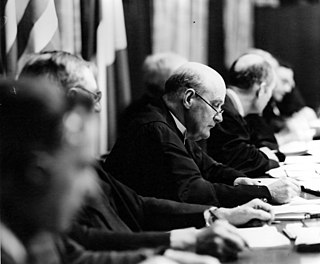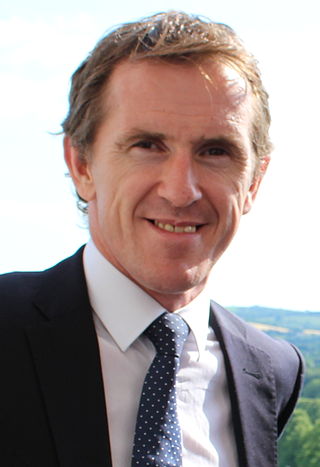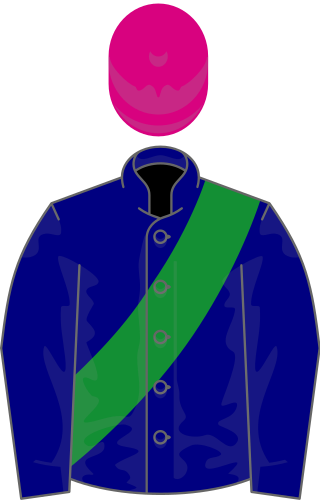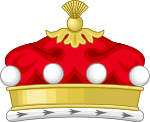
Horse racing is the second largest spectator sport in Great Britain, and one of the longest established, with a history dating back many centuries. According to a report by the British Horseracing Authority it generates £3.39 billion total direct and indirect expenditure in the British economy, of which £1.05 billion is from core racing industry expenditure, and the major horse racing events such as Royal Ascot and Cheltenham Festival are important dates in the British and international sporting and society calendar.

Geoffrey Lawrence, 3rd Baron Trevethin, 1st Baron Oaksey, was the lead British judge during the Nuremberg trials after Second World War, and President of the International Military Tribunal.

Baron Trevethin, of Blaengawney in the County of Monmouth, is a title in the Peerage of the United Kingdom. It was created in 1921 for the prominent judge Sir Alfred Lawrence, Lord Chief Justice of England from 1921 to 1922.

Sir Anthony Peter McCoy, commonly known as AP McCoy or Tony McCoy, is a Northern Irish former National Hunt horse racing jockey. Based in Ireland and Britain, McCoy rode a record 4,358 winners, and was Champion Jockey a record 20 consecutive times, every year that he was a professional.

Rupert "Ruby" Walsh is an Irish former jockey. He is the second child, and eldest son, of former champion amateur jockey Ted Walsh and his wife Helen. Widely regarded as one of the greatest National Hunt jockeys of all time, Walsh is the third most prolific winner in British and Irish jump racing history behind only Sir Anthony McCoy and Richard Johnson.
John Francome is a retired seven-time British Champion jump jockey. He was previously a racing trainer and broadcaster with Channel 4, and is an author.
Foinavon (1958–1971) was an Irish racehorse. He won the Grand National in 1967 at odds of 100/1 after the rest of the field fell, refused or were hampered or brought down in a mêlée at the 23rd fence. The fence was officially named after Foinavon in 1984.
Sir Peter O'Sullevan was an Irish-British horse racing commentator for the BBC, and a correspondent for the Press Association, the Daily Express, and Today. He was the BBC's leading horse racing commentator from 1947 to 1997, during which time he described some of the greatest moments in the history of the Grand National.
Crisp was a champion steeplechase horse. He was a bay Thoroughbred gelding that was foaled in 1963 in Australia. In his native country, he won many important jumping races, particularly two-milers, including the Hiskens Steeplechase in 1969 and 1970. So well did he jump, he was nicknamed "The Black Kangaroo". However, Crisp is probably best remembered for his epic contest with Red Rum in the 1973 Grand National in England.
The National Hunt Challenge Cup is a National Hunt steeplechase in Great Britain which is open to horses aged five years or older. It is run on the Old Course at Cheltenham over a distance of about 3 miles 6 furlongs, and during its running there are twenty-three fences to be jumped. The race is a handicap race for novice chasers, and it is scheduled to take place each year during the Cheltenham Festival in March.

Neptune Collonges is a retired AQPS racehorse. He was bred in France as an AQPS and trained in Great Britain. His most noted success came when winning the Grand National on 14 April 2012.

The 1996 Grand National was the 149th official renewal of the world-famous Grand National steeplechase that took place at Aintree on 30 March 1996. It was the first national to run since 3 time winner Red Rum was buried at the winning post following his death the previous October.

The 1995 Grand National was the 148th official renewal of the famous Grand National steeplechase that took place at Aintree near Liverpool, England, on 8 April 1995.

The 1992 Grand National was the 146th renewal of the world-famous Grand National horse race that took place at Aintree Racecourse near Liverpool, England, on 4 April 1992.

The 1990 Grand National was the 144th renewal of the Grand National horse race that took place at Aintree Racecourse near Liverpool, England, on 7 April 1990. The off time was 3.20pm.

The 1989 Grand National was the 143rd renewal of the Grand National horse race that took place at Aintree Racecourse near Liverpool, England, on 8 April 1989.
The 1982 Grand National was the 136th running of the Grand National horse race that took place at Aintree Racecourse near Liverpool, England, on 3 April 1982.

Coneygree is a retired British Thoroughbred racehorse who competed in National Hunt races. In a career which ran from November 2010 to February 2019 he ran in eighteen races, winning nine times. In March 2015, he became the first novice chaser to win the Cheltenham Gold Cup for more than forty years. His subsequent career was hampered by injury and he did not run again in the Cheltenham Gold Cup after winning it.
Tim Brookshaw was a National Hunt jockey who was champion jockey in 1958/1959.
Hewick is an Irish-bred and trained Thoroughbred racehorse who races under National Hunt rules. He is a specialist long-distance steeplechaser known for his victories in the 2022 American Grand National and 2023 King George VI Chase.














